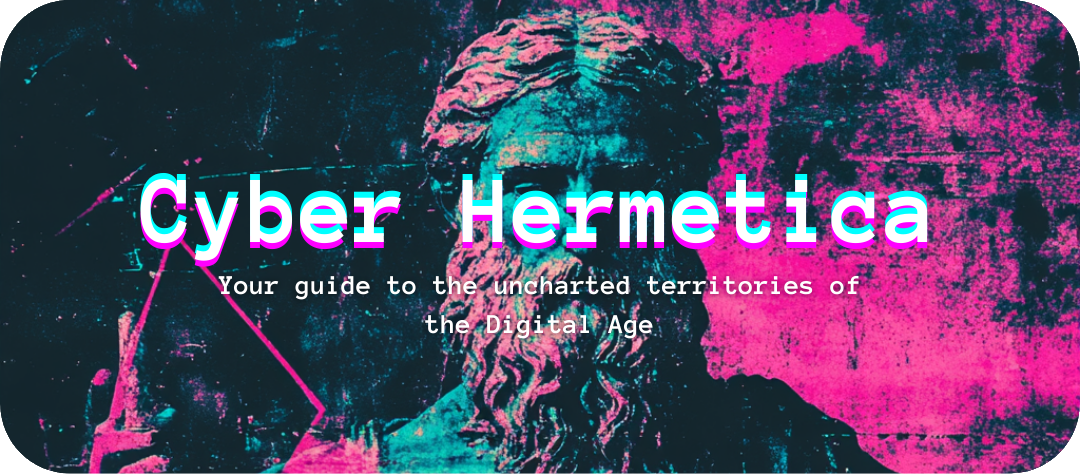Hi there, I’m Matte. Privacy & cybersecurity professional by day, schizo-cyberoccultist by night. Every sunday I bring you a weekly dose of schizophrenization, blending insights into the Digital Age, echoes from the past and digital survival tips. If you like this, you will also enjoy the rest of Cyber Hermetica!
⚡ SEMIOTIC FLASHES
Personal weekly considerations. Decrypting meaning, one flash at a time.
The UK's war against encryption and digital sovereignty
The UK government has ordered Apple to open access to users’ iCloud data, citing national security concerns. The order is based on the Investigatory Powers Act (IPA), a 2016 law that allows the government to force tech companies to provide access to users' encrypted data.
Apple appears to have rejected the request, stating that rather than compromising its encryption algorithms, it would prefer to completely remove encryption features for UK users, which were introduced in 2022.
To make matters even more alarming, the Online Safety Bill (OSB) adds another layer of government control, imposing forced transparency, liability for published content, and automated scanning systems to detect illegal material.
On one hand, the IPA mandates the creation of secret access points (backdoors) to encrypted data stored by tech companies. On the other, the OSB requires real-time monitoring and scanning of communications and content.
The combination of the IPA and OSB creates a legal environment where protecting user data from government interference becomes impossible—marking the beginning of the end for encryption protections in the UK. Last year, Signal threatened to pull out of the UK market precisely due to the Online Safety Bill.
The UK situation inevitably reignites the encryption debate—one that never truly went away.
Unfortunately, end-to-end encryption is not welcomed by any government. Those who have followed me for a while know that the UK, European Union, United States, Canada, and Australia have spent years in a political and technological marathon to find ways to circumvent the obstacles created by strong encryption.
We are in the middle of the Second Crypto War: governments and intelligence agencies are pressuring Big Tech to dismantle end-to-end encryption and introduce government-mandated backdoors in security systems.
To achieve this, they have introduced strikingly similar laws over the years. The UK’s Investigatory Powers Act (2016) was later echoed by Australia’s Assistance and Access Bill (2018)—both laws empower governments to force tech companies to provide access to encrypted data.
In the EU and the US, the approach is less direct but equally dangerous. Some proposed laws, such as Chatcontrol in the EU and the EARN IT Act in the US—which closely resemble the UK’s Online Safety Bill—could seriously undermine encryption protections for American and European citizens.
If these political trends continue, encryption could effectively become illegal in many jurisdictions.
More than ever, it is crucial to stay informed about the latest regulatory developments in encryption and mass surveillance. More than ever, it is essential to understand the risks, techniques, and tools that—despite everything—still allow us to maintain individual sovereignty against governments and policymakers who would rather have us completely transparent, predictable, and accessible at all times.
If you want to know more about the Crypto Wars, read here.
💻 DIGITAL GRIMOIRE
Digital survival tactics: OpSec, Cybersec, OSINT, and AI tools to dominate the Digital Age.
Phone Interceptions and Metadata
Pasquale “Pat” Barbaro, an Australian drug trafficker, was extremely cautious about his privacy—or so he thought. In his bag, he carried twelve disposable and anonymous phones, which he used to communicate with his associates and coordinate the transport of millions of ecstasy pills. However, he miscalculated. The police didn’t know who was on the other end of the line, but they could analyze the metadata from his calls.
Metadata—such as the called phone number, the duration of the conversation, and the location of the cell tower—allowed investigators to track his movements and interactions over time, ultimately revealing his identity and involvement in drug trafficking.
Cyber Hermetica readers are certainly not drug traffickers, but it is still important to understand the measures that can help reduce the risk of phone interception and surveillance:
Use anonymous phones and SIM cards, purchasing them without providing personal information—paying in cash and using prepaid SIM cards whenever possible.
Avoid SMS and regular phone calls, as they are recorded by telecom providers. Instead, use only messaging apps with end-to-end encryption, such as Signal or Session. Avoid WhatsApp and Telegram, as they retain metadata despite encryption. In high-risk situations, enable message self-destruction if the app supports it.
Disable location services and always turn off Wi-Fi and Bluetooth when not in use, as they can be exploited to track movements within a city.
Use Faraday bags to block any signal emissions from your smartphone while moving around and when not in use.
Always remember that metadata can reveal a lot about a person's habits and contacts.
📡 DIGITAL SIGNALS
Transmissions from the infosphere: world events, data breaches and news that impact our digital reality.
Blood on the Blockchain. On January 21, 2025, ten assailants kidnapped David Balland, co-founder of Ledger, and his wife, demanding $10 million in Bitcoin as ransom. Along with their demand, they sent one of Balland’s severed fingers. The story, however, had a fortunate ending: the kidnappers were tracked down by French special forces, and the hostages were rescued. Yet, this incident reveals a grim reality—in the crypto world, security is no longer just about seed phrases but about physical survival. Investors and founders have become prime targets for kidnappers and criminals, making personal opsec essential. When success paints a target on your back, how much is your privacy worth?

🌐 SUBSTACK’S SUBNET
Emerging voices: articles and contents on Substack, handpicked by me to inspire and connect.
. A short dystopian story exploring a future where the very concept of humanity has been reduced to an industrial commodity—with people employed as "Professional Human Beings" to display authentic emotions for the benefit of an AI system desperately trying to grasp the ineffable chaos of human existence. The protagonist, H-2994, is monitored through sensors implanted in his teeth, measuring every emotion, turning every act of rebellion into mere data to be analyzed. A narrative that masterfully conveys the bleak irony of being paid to remain "human" in a world ruled by machines.📟 RETROWAVE
Fragments from the past: cypherpunk mailing lists, cybernetic cults, hacker zines and forgotten digital prophets from the 90s and onward.
Genesis of neolemurianism, part 5
Kaye’s story began in the summer of 1958, when his employer, Peter Vysparov, met William Burroughs while conducting occult investigations in Paris. As a result of this meeting, Kaye himself was introduced to Burroughs on December 23rd of the same year, at Vysparov’s private library in New York.
Public records confirm that Burroughs was primarily residing in Paris and London at that time. The CCRU found no concrete evidence of a trip to the USA, though his biographical records are not exhaustive enough to rule out a brief excursion to New York with certainty. What is undeniable, however, is that shortly after the winter of 1958, Burroughs began writing cryptically about visions, paranormal phenomena, encounters with his double, and experiments with the cut-up technique.
While exploring the library’s unparalleled collection of rare occult works, Burroughs made a discovery that entangled him in a radical, seemingly unintelligible disorder of time and identity. The trigger was an encounter with a text that he had yet to write:
“An old picture book with gilt-edged lithographs, onion paper over each picture,
The Ghost Lemurs of Madagascar in gold script” (GLM 30).
At that moment, he could not have known that Captain Mission had taken the very same volume as his guide three centuries earlier, already referring to it as “old”.
As he flipped through the pages, Burroughs entered a brief catatonic trance state. When he emerged, he was disoriented and barely able to stand. Despite his confusion, he recounted the anomalous episode with a detached, sardonic tone.
Twenty-nine years would pass before Kaye understood what had truly occurred.
During the trance, Burroughs felt as though he had been subjected to a silent communication with a ghostly, non-human entity. It had flashed him forward into his life as an old man, decades into the future. Oppressed by:
“a crushing sensation of implacable destiny, as if fragments of a frozen time dimension
were cascading into awareness,”
he remembered writing The Ghost Lemurs of Madagascar—
“although it wasn’t writing exactly,”
and his writing instruments were archaic, belonging to someone entirely different, in another place and time.
🌀 SYMBOLS
Memes: visual symbols that decode the schizophrenia of the Digital Age.
Did you read the latest on Cyber Hermetica?
Return next week for another schizotechnic rendezvous.







